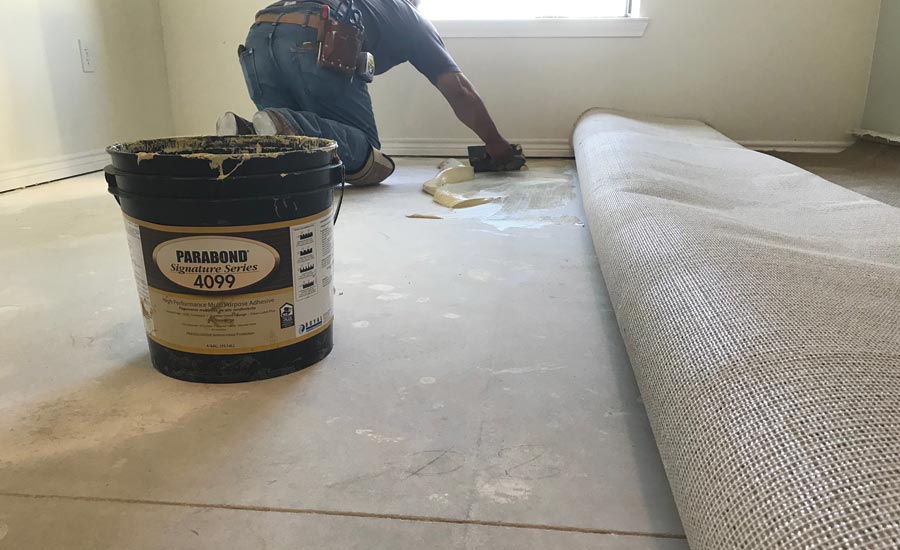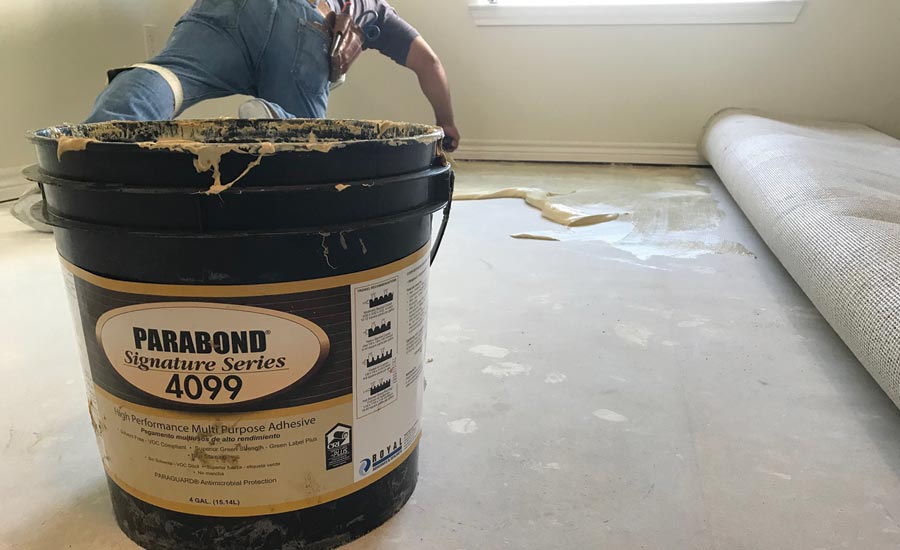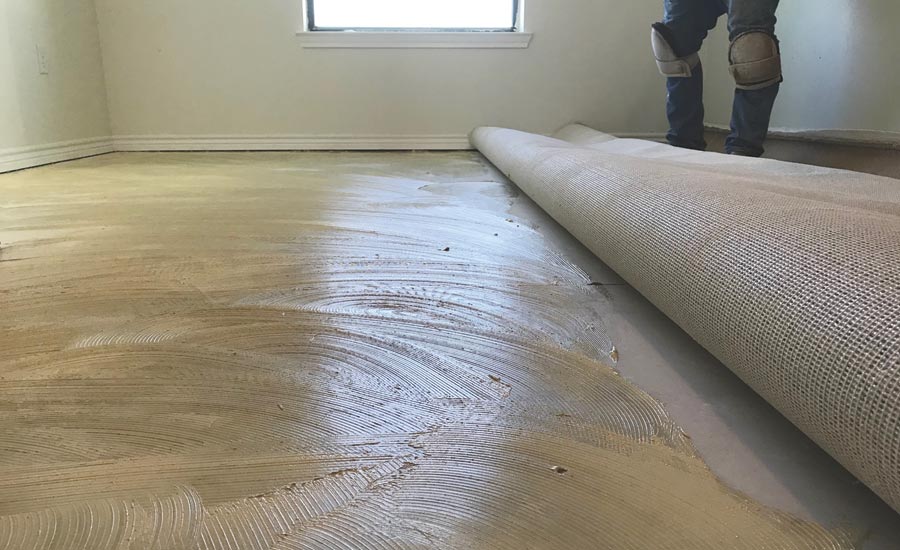Carpet Installation Tips

In today’s construction, more concrete slabs are being power troweled and therefore causing the concrete surface to be non-permeable (non-porous).





As a flooring professional who has been in our industry for 26 years, I have seen a lot of changes in the way flooring can be installed. Not only the method for installing flooring, but also the backing systems used on the flooring. Traditionally, broadloom carpet had a breathable backing system, either jute or polypropylene. Now there is almost an infinite amount of backing systems for broadloom that can either be breathable or non-breathable.
So why am I bringing this up? Knowing the backing system of the carpet you are installing is vital to a successful installation. The backing system of the carpet you are installing will dictate which form of moisture testing you will need to do prior to installation. Not all moisture testing is relevant for broadloom carpet with a breathable backing system. If you are planning to install a broadloom carpet that has a breathable backing system, you will need to use ASTM F1869 Standard Test Method for Measuring Moisture Vapor Emission Rate of Concrete Subfloor using Anhydrous Calcium Chloride to look for moisture. F1869 has been around for many years and is a good standard as long as you understand what it is telling you. ASTM F2170 Standard Test Method for Determining Relative Humidity in Concrete Floor Slabs Using in situ Probes shouldn’t be used for this application as the results will not be useful in an installation where the surface of the concrete isn’t covered with a non-permeable floor covering. When installing a carpet backing that is non-breathable, then ASTM F2170 is an acceptable test method.
Knowing your backing system will also dictate the open and working time of the adhesive you choose. In today’s construction, more and more concrete slabs are being power troweled and therefore causing the concrete surface to be non-permeable (non-porous). When installing a non-breathable backing system over a non-permeable concrete substrate, the installer can be challenged knowing exactly when to place the flooring into the adhesive. If you are installing a drop room (no seam required) the issue is almost negligible; if you are installing a 40’ x 40’ room, then it is imperative to know the working characteristics of your adhesive. You must wait for the adhesive to flash off before you place the carpet into the adhesive, but yet still allow enough working time to align your seams. Add in a 3’ pattern and you can see where this is truly challenging. If the installer “assumes” the substrate is porous when it is not and places the non-breathable backing system into wet adhesive you can have a real issue. The adhesive may not ever dry under the carpet, which can cause bubbles, adhesive displacement, inhibit mold growth and cause a foul odor in the building.
You will also be choosing a different trowel for a permeable slab vs a non-permeable. The permeable slab will require more adhesive, which will compensate for any absorption into the porous slab. Over-absorption from the slab is also a very important issue to not overlook. If the slab is powdery or dusty, the adhesive can absorb into the slab and not leave enough adhesive on the surface to properly bond the carpet. Typically, an acrylic primer is used for this in a two-coat application. This will fill the pores of the concrete and allow the adhesive to work properly. Always use the adhesive manufacturer’s referenced trowel to apply their adhesive. These trowels have been tested to ensure maximum performance for each application. Using too much adhesive or too little adhesive can cause an installation failure. When an independent inspector or the manufacturer comes out to look at the failure it will be very easy for them to determine if the proper trowel was used.
These are just a few tips to help ensure a successful installation. Always remember when there is a failure or complaint, you will be judged based on one or all of the following:
- Adhesive installation guidelines
- Carpet installation guidelines
- ASTM F710 Standard Practice for Preparing Concrete Floors to Receive Resilient Flooring (This standard was written for resilient, but has been adapted and accepted by most types of flooring manufacturers)
- ASTM F1869 Standard Test Method for Measuring Moisture Vapor Emission Rate of Concrete Subfloor using Anhydrous Calcium Chloride
- ASTM F2170 Standard Test Method for Determining Relative Humidity in Concrete Floor Slabs Using in situ Probes
- The Carpet & Rug Institutes CRI 104 Standard for Installation of Commercial Carpet & CRI 105 Standard for Installation of Residential Carpet
Knowing these guidelines will help protect your reputation and ensure your customers will always want you back for their next project.
Looking for a reprint of this article?
From high-res PDFs to custom plaques, order your copy today!







.jpg?t=1690771780)


